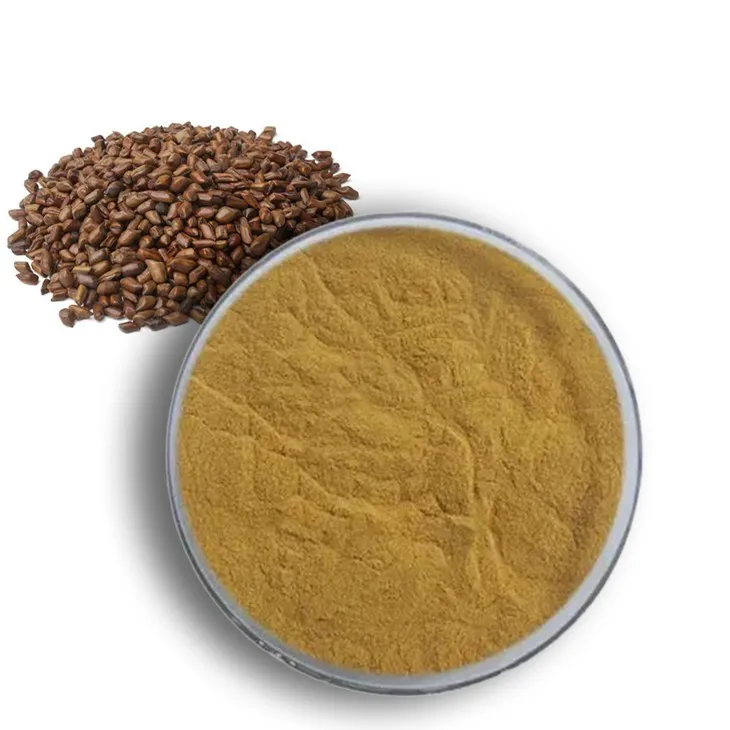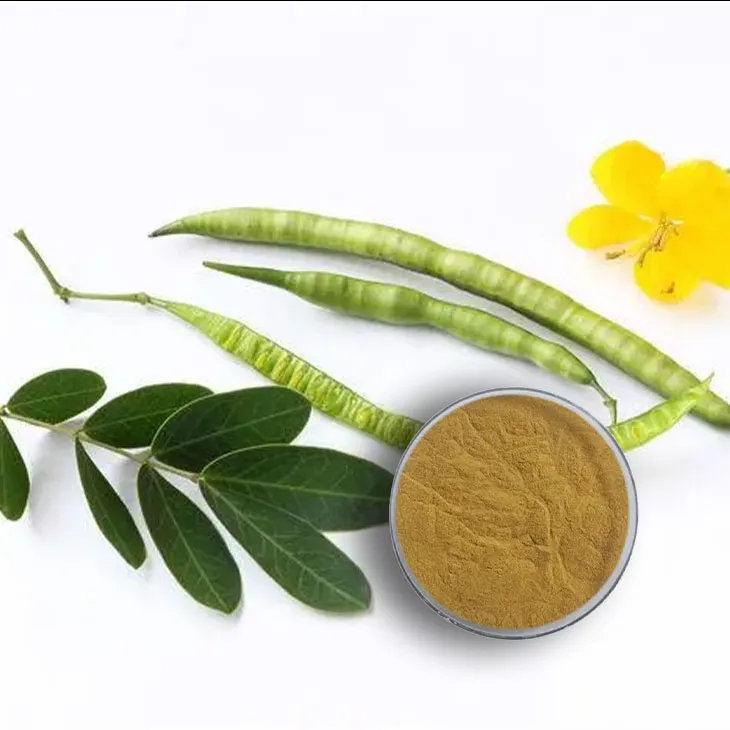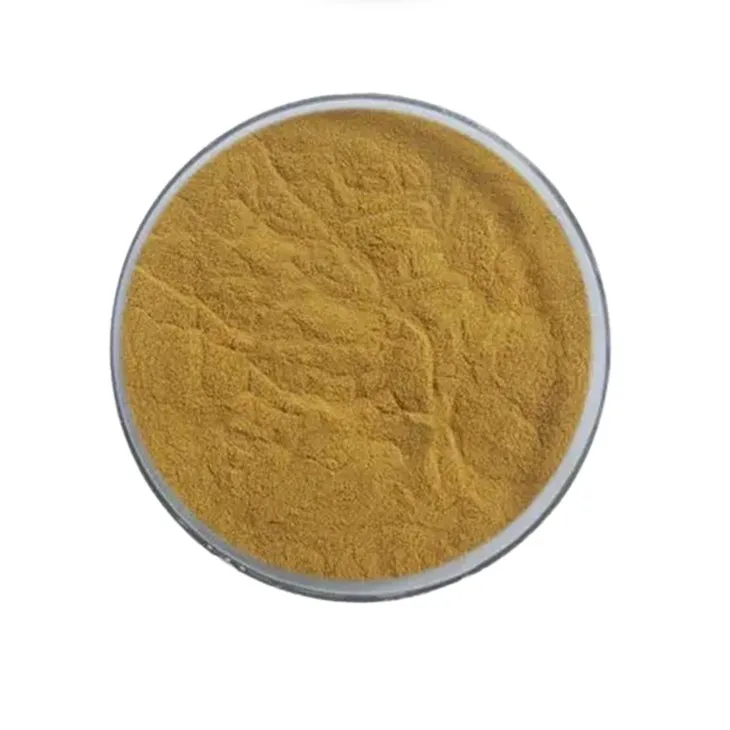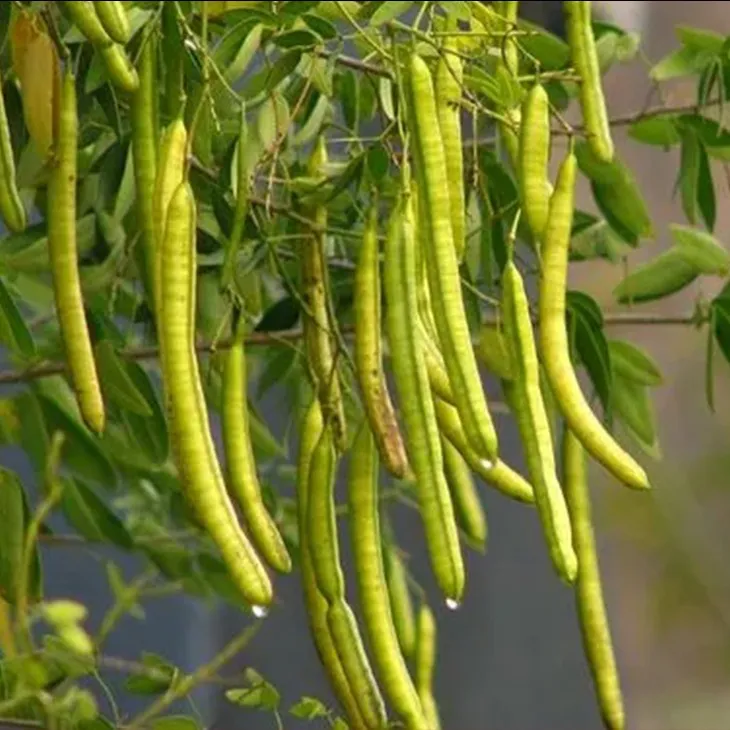- 0086-571-85302990
- sales@greenskybio.com
How to make powder with cassia seed extract?
2024-11-29

1. Introduction
Cassia seed, a traditional Chinese medicinal material, has been widely used for its various health - promoting properties. Cassia Seed Extract contains many beneficial components such as flavonoids, anthraquinones, and polysaccharides. Transforming the extract into powder form can not only preserve these components better but also expand its applications in different industries. This article will provide a comprehensive guide on how to make powder from Cassia Seed Extract, covering aspects from raw material selection to quality control.

2. Raw Material Selection for Cassia Seed Extract
2.1 Source of Cassia Seeds
High - quality sources are crucial. Cassia seeds should be sourced from reliable regions known for their clean environment and proper cultivation practices. For example, in some traditional cultivation areas in Asia, the climate and soil conditions are favorable for the growth of cassia plants, which can produce cassia seeds with better quality.
2.2 Purity and Quality of the Extract
When selecting cassia seed extract, its purity should be considered. A high - purity extract contains a higher proportion of the active components. This can be determined through various analytical methods such as high - performance liquid chromatography (HPLC). Additionally, the quality of the extract should be evaluated in terms of its color, odor, and consistency. A good - quality extract usually has a characteristic color, a faint natural odor, and a relatively uniform consistency.

3. The Conversion Process from Extract to Powder
3.1 Evaporation
- The first step is often evaporation. The cassia seed extract, which is usually in a liquid or semi - liquid state, needs to have its solvent removed. This can be achieved through gentle heating in a suitable evaporation device, such as a rotary evaporator.
- During evaporation, it is important to control the temperature carefully. If the temperature is too high, it may cause the degradation of some active components in the extract. A temperature range of around 40 - 60°C is often considered suitable for cassia seed extract evaporation.
3.2 Drying
- After evaporation, the semi - dried extract then undergoes drying. There are several drying methods available, such as freeze - drying, spray - drying, and oven - drying.
- Freeze - drying is a preferred method in some cases as it can better preserve the structure and activity of the components in the extract. In freeze - drying, the extract is first frozen and then the water is removed by sublimation under low pressure.
- Spray - drying is also commonly used. In this process, the liquid extract is sprayed into a hot air stream, where the water evaporates quickly, leaving behind fine powder particles. However, the temperature and air flow rate need to be carefully controlled to ensure the quality of the resulting powder.
- Oven - drying is a relatively simple method, but it may require more time and may have a higher risk of over - drying or causing some component changes if not properly controlled.
3.3 Grinding
- Once the dried extract is obtained, it may be in the form of lumps or flakes. Grinding is then necessary to convert it into a fine powder.
- The choice of grinding equipment is important. A mortar and pestle can be used for small - scale production or in laboratory settings. For larger - scale production, a mechanical grinder such as a ball mill or a hammer mill is more suitable.
- During grinding, it is important to ensure that the powder is evenly ground. This can be achieved by controlling the grinding time and speed. Over - grinding may cause the powder to become too fine and may lead to some component losses or changes in properties.

4. Quality Control Measures
4.1 Component Analysis
- After the powder is made, component analysis should be carried out. As mentioned before, HPLC can be used to determine the content of key components such as flavonoids and anthraquinones in the powder.
- Other analytical techniques like gas chromatography - mass spectrometry (GC - MS) can also be employed to detect any impurities or by - products in the powder.
4.2 Microbiological Testing
- Microbiological testing is essential to ensure the safety of the powder. Tests for bacteria, fungi, and yeasts should be conducted.
- The powder should meet the relevant microbiological standards. For example, in the food and pharmaceutical industries, there are strict limits on the number of microorganisms allowed in the products.
4.3 Physical Properties Testing
- Testing the physical properties of the powder is also important. This includes parameters such as particle size distribution, bulk density, and flowability.
- The particle size distribution can be measured using particle size analyzers. A uniform particle size distribution is often desired for better product performance in various applications.
- Bulk density affects how the powder is stored and transported. And good flowability ensures that the powder can be easily processed in subsequent operations such as mixing and encapsulation.

5. Unique Properties of Cassia Seed Extract Powder
5.1 Chemical Composition
Cassia seed extract powder retains the rich chemical composition of the original extract. The flavonoids present in the powder have antioxidant properties, which can help in scavenging free radicals in the body. The anthraquinones have potential laxative effects, and the polysaccharides may have immunomodulatory functions.
5.2 Solubility
The solubility of the powder can vary depending on the nature of the components and the processing methods. In general, proper formulation can improve its solubility in different solvents, which is important for its application in areas such as beverage and pharmaceutical formulations.
5.3 Stability
When processed and stored correctly, cassia seed extract powder can have relatively good stability. However, factors such as temperature, humidity, and light exposure can affect its stability. For example, exposure to high temperatures and humid conditions may cause the degradation of some components in the powder over time.
6. Significance in Different Industries
6.1 Food Industry
- In the food industry, cassia seed extract powder can be used as a natural ingredient in functional foods. It can be added to health - promoting teas, beverages, or food supplements. For example, it can be incorporated into herbal teas, providing potential health benefits such as improving digestion and antioxidant protection.
- Due to its unique flavor and properties, it can also be used to enhance the taste and functionality of certain food products.
6.2 Pharmaceutical Industry
- The pharmaceutical industry can utilize cassia seed extract powder for formulating drugs. Its active components may have potential therapeutic effects for various diseases, such as eye diseases (as cassia seed has been traditionally used in eye - related treatments) and digestive disorders.
- The powder form is convenient for formulation into tablets, capsules, or powders for oral administration.
6.3 Cosmetic Industry
- In the cosmetic industry, the antioxidant properties of cassia seed extract powder make it a valuable ingredient in skin care products. It can be added to creams, lotions, or masks to help protect the skin from oxidative damage caused by free radicals.
- Its potential anti - inflammatory properties may also be beneficial for treating certain skin conditions.
7. Conclusion
Making powder from cassia seed extract involves careful selection of raw materials, proper conversion processes, and strict quality control measures. The resulting powder has unique properties and significant applications in different industries. With the increasing demand for natural and functional products, the development and utilization of cassia seed extract powder are expected to grow in the future.
FAQ:
Question 1: What are the key factors in selecting raw materials for cassia seed extract?
When selecting raw materials for cassia seed extract, several factors are crucial. Firstly, the quality and origin of the cassia seeds matter. Seeds from a reliable source with no contamination or pesticide residues are preferred. Secondly, the maturity of the seeds can affect the composition of the extract. Mature seeds generally have a more stable and rich chemical profile. Additionally, factors like the storage conditions of the seeds before extraction play a role. If the seeds are stored improperly, it may lead to degradation of some active components in the extract.
Question 2: What are the best practices during the conversion of cassia seed extract to powder?
The conversion process has several best practices. One important step is to ensure proper drying of the extract before powdering. This helps in removing excess moisture which can affect the powder's stability and quality. Using appropriate drying techniques such as freeze - drying or low - temperature vacuum drying can preserve the active components. Another practice is to use proper grinding equipment. A fine - grinding mill can ensure that the powder has a uniform particle size. Also, during the process, it is necessary to control the environment to avoid contamination, for example, by maintaining a clean and dry working area.
Question 3: How can we ensure quality control during the production of cassia seed extract powder?
Quality control during the production of cassia seed extract powder involves multiple aspects. Firstly, raw material inspection is essential. This includes testing for the presence of impurities, correct species identification, and quality of the cassia seeds. During the extraction and powdering process, regular sampling and analysis should be carried out. Parameters such as the content of active ingredients, moisture level, and microbiological quality need to be monitored. For example, high - performance liquid chromatography (HPLC) can be used to determine the concentration of key bioactive compounds. Also, final product testing should be comprehensive to ensure that the powder meets all the required quality standards.
Question 4: What are the unique properties of cassia seed extract powder?
Cassia seed extract powder has several unique properties. It often contains bioactive compounds such as flavonoids and anthraquinones. These compounds give it antioxidant properties, which can help in scavenging free radicals in the body. The powder may also have anti - inflammatory effects due to the presence of certain chemical constituents. Additionally, it can have a laxative effect, which is related to the anthraquinone content. In terms of physical properties, it usually has a fine texture, which can affect its solubility and dispersibility in different solvents or matrices.
Question 5: In which industries is cassia seed extract powder significant?
Cassia seed extract powder is significant in several industries. In the pharmaceutical industry, it can be used as an ingredient in herbal medicines or dietary supplements due to its potential health benefits. In the cosmetic industry, its antioxidant and anti - inflammatory properties make it suitable for use in skincare products such as creams and lotions. In the food industry, it can be added to functional foods as a natural ingredient with potential health - promoting effects.
Related literature
- Study on the Chemical Composition of Cassia Seed Extract"
- "Processing Techniques for Herbal Extract Powders: A Case of Cassia Seed"
- "Quality Control in the Production of Cassia - based Herbal Products"
- ▶ Hesperidin
- ▶ Citrus Bioflavonoids
- ▶ Plant Extract
- ▶ lycopene
- ▶ Diosmin
- ▶ Grape seed extract
- ▶ Sea buckthorn Juice Powder
- ▶ Fruit Juice Powder
- ▶ Hops Extract
- ▶ Artichoke Extract
- ▶ Mushroom extract
- ▶ Astaxanthin
- ▶ Green Tea Extract
- ▶ Curcumin
- ▶ Horse Chestnut Extract
- ▶ Other Product
- ▶ Boswellia Serrata Extract
- ▶ Resveratrol
- ▶ Marigold Extract
- ▶ Grape Leaf Extract
- ▶ New Product
- ▶ Aminolevulinic acid
- ▶ Cranberry Extract
- ▶ Red Yeast Rice
- ▶ Red Wine Extract
-
Feverfew Extract
2024-11-29
-
Lycopene
2024-11-29
-
Natural grape seed extract
2024-11-29
-
Chaste Berry Extract
2024-11-29
-
Red Date Extract
2024-11-29
-
Pueraria Lobata Extract
2024-11-29
-
Fenugreek Extract Powder
2024-11-29
-
Agaricus Blazei Extract
2024-11-29
-
Clove Powder
2024-11-29
-
Chasteberry Extract
2024-11-29





















